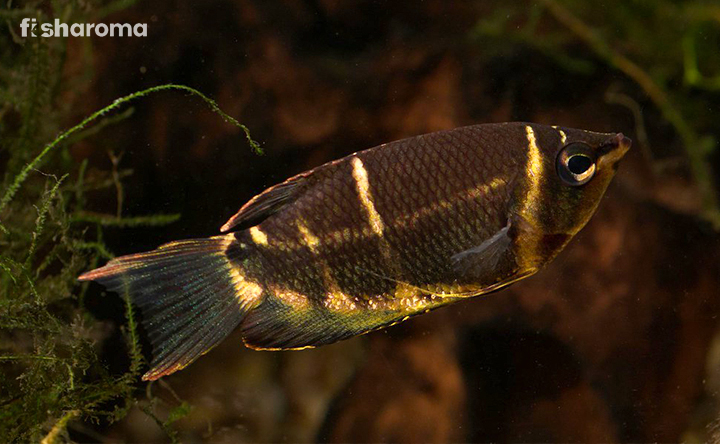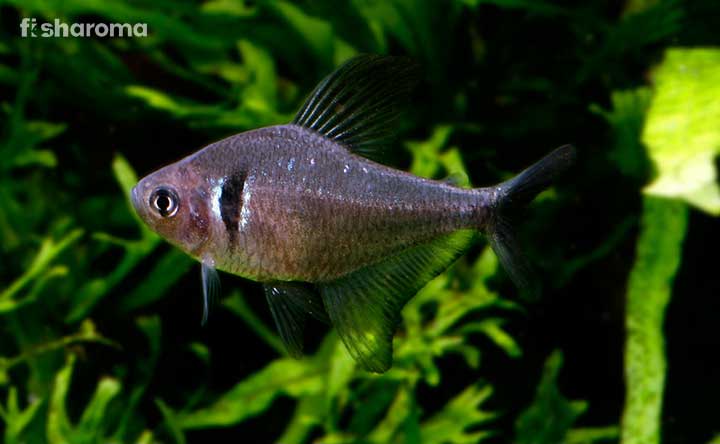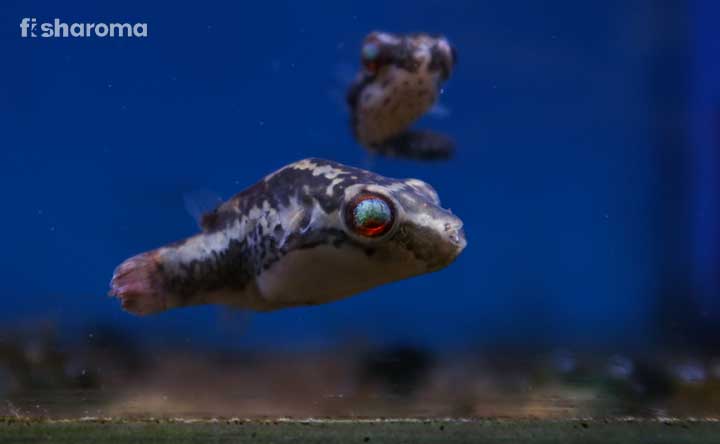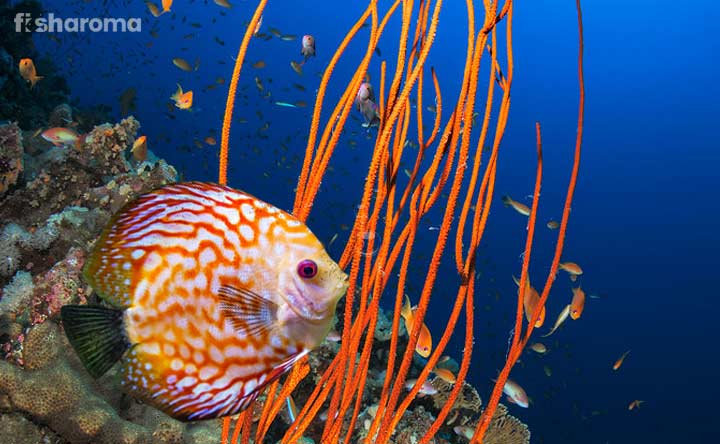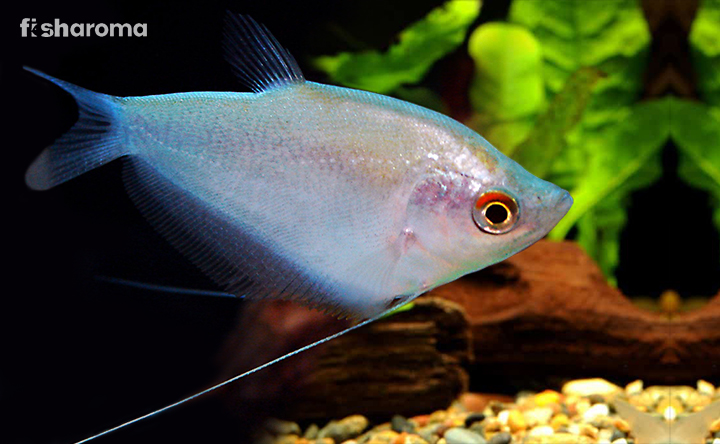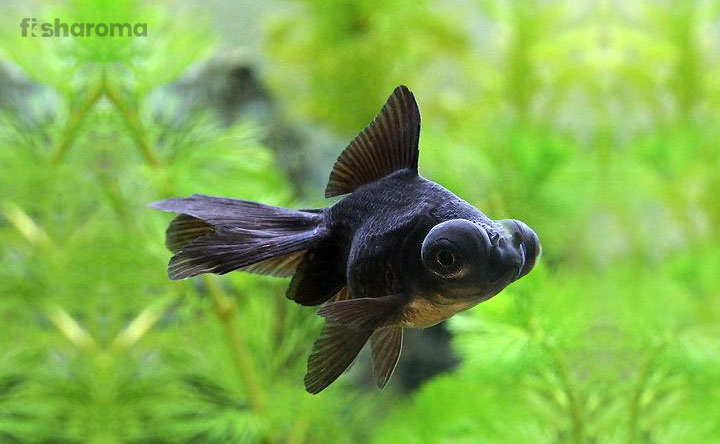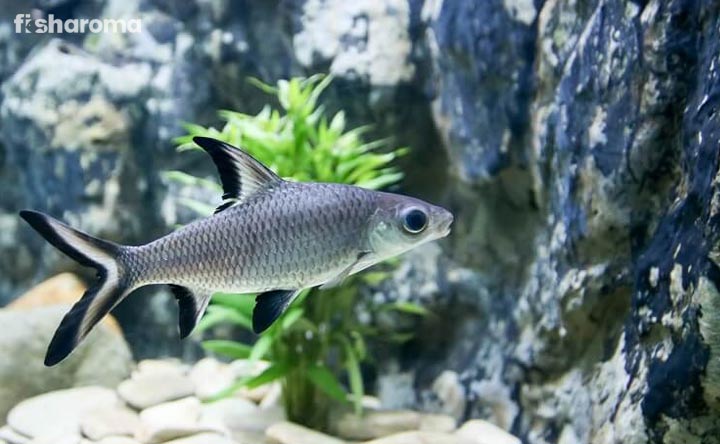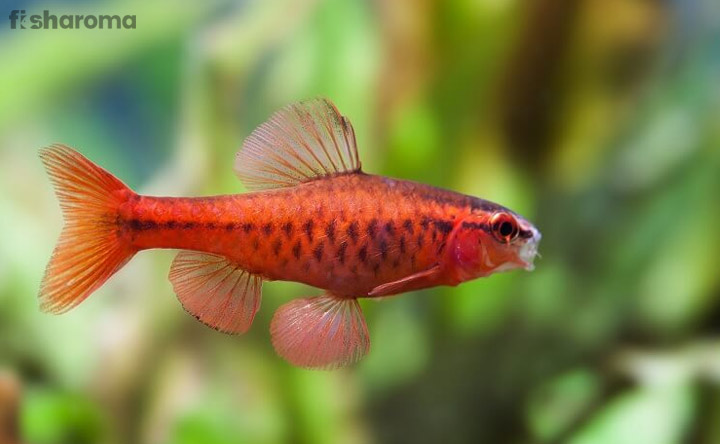Sterbai Cory- A Care Guide To The Sterba’s Cory Fish
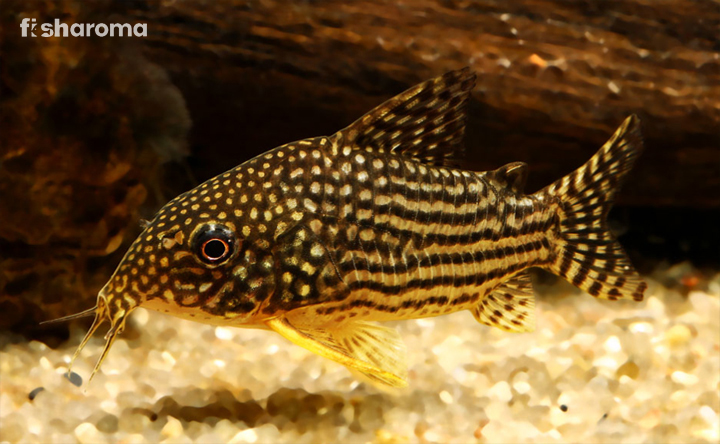
Sterbai Cory, also known by the name of Sterba’s Cory, is a magnificent freshwater species of the Corydoras Catfish group. Out of 200 species of the most famous Catfish breeds, this tropical asset not only looks extraordinary, but also is famous for an easy fishkeeping routine. This fact about the Sterbai Cory, makes it both beautiful and beginner-friendly.
The reason for their popularity amongst the aquarist masses is quite evident from their perks and appeal. So if you are planning to get them for your aquarium, you are exactly where you need to be. In this Sterbai Cory Care Guide, we guide you through elements you need on the plate before making them your very next tank addition.
Key Specifications
Here goes a few key facts to see before you get started:
| Scientific Name | Corydoras sterbai |
| Origin | Bolivia and Brazil, South America. |
| Lifespan | 10-20 years |
| Colours/Patterns | Dark Brown base with white and black spots around the head and tail respectively. |
| Temperament | Peaceful |
| Size | 2-3 inches |
| Diet | Omnivorous |
| Family | Callichthyidae |
| Compatibility | Compatible with other peaceful fish. |
| Tank size | 10-25 gallons |
| Care level | Easy |
| Water preference | Freshwater |
Overview
The unique Sterbai Cory is from the Callichthyidae family, in the order Siluriformes. This unique Corydoras Catfish species originates from South America. Eye-catching appeal and exterior is definitely a big boost, other than their peaceful nature. That is all you really need, to be categorized as beginner-friendly, apart from being hardy. Still, despite all these pros, there are certain fishkeeping norms you must follow to keep them all healthy and hearty.
Origin and Habitat of Sterbai Cory Care Guide
Originating from the regions of South America, the Sterbai Cory is precisely found in the Guapore River area, which is situated between the Brazilian and the Bolivian lands. However, the mass of them are mostly captive-bred on the Eastern European lands. As they are majorly found in the upper reaches of their place of origin, the shadowy and typically dark sections of the riverbed have an abundance of this species. It is very fitting for these bottom-dwellers to survive in this environment, and proper emulation of the same should be practiced in the tank as well.
This variant of Cory likes their waters to have a decently fast current pace, which compliments their swimming speed. Neither too strong, nor too weak, a balanced water current works perfectly for our precious Corydoras. They naturally like creeks, small tributaries or flooded forests with tropical and temperate freshwater, as they can peacefully co-exist in an environment like that.
Appearance of Sterbai Cory Care Guide
The rank of our precious Sterbai Cory is up there when it comes to appearance or in being an aquarist’s pick. This small catfish species have an order-exclusive feature from Siluriformes, as they have two rows of armour plates on their body acting as a shield against predators.
Other than that, they have just about 10 or less dorsal ray fins with two barbels around the mouth or snout region. The sole purpose of the barbels is to scavenge for food in the substrate. Other than their unique structural features, let’s put some focus on their vibrant beauty.
Colour
Predominant tints of black or at times, brown base colours, their entire body is surrounded by multiple white dots. The contrast of it all is truly a treat to one’s optic nerves, bringing glory to their uniqueness and appeal as a whole. Briefly stating, the head section is usually brown with dots. Whereas, the fins and tail are opaque with the usual black dots on top. The belly region is highlighted with rich gold, alongside parts of the head, fins and pectoral spine. Conclusively, they have a range of vermiculation, patterns and spots when it comes to variety, appearance-wise.
Albino Sterbai Cory– This is indeed a variant you do not get to see much, but their rarity does not stop them from being popular. Albino Sterbai Cory, is an uncommon tank-bred variant of our target fish with its own set of distinguishable features. An adult showcases orangish pectoral fins with spotting. The colours in this case reverse from that of the original fish, as instead of black and white, there are hues of pink and yellow.
Size
The Sterbai Corydoras grow about 2-3 inches in size, which is pretty small for a classic Catfish, yet that is something that makes it more home-aquarium friendly.
Behaviour of Sterbai Cory Care Guide
The Sterbai Cory are majorly bottom-dwelling fish who are nowhere close to being aggressive. These docile critters like to stay out of any fish’s business, doing their own thing at their own pace. These schooling fishes prefer to be in groups of at least six, as their confidence peaks around conspecifics. Peaceful, non-aggressive traits, with a hardy self, make this fish very flexible to a range of parameters and situations.
It is good to not expect much activity from them as they are not relatively active. They are mostly immersed in their own world and are nocturnal. Visible in play mostly when the lights are out, these fishes are incredible to witness.
Sometimes, a certain type of movement in their eye is often misunderstood with blinking. It almost appears as if they are blinking because they are amazed to be looked at. Factually, it is sad to break your bubble as these Cory fishes are not blinking, but they are merely examining the substrate with a tilt-motion in the eye. Nevertheless, it still appears to be a very interesting trait for us to see.
Lifespan of Sterbai Cory Care Guide
The average lifespan of a Sterbai Cory is bottom-line of 10 years, which can exceed up to 20 years. Living for that long and being so easy to take care of, this fish truly is an all-rounder, doing justice to its popularity status. Under proper care and discipline, their life expectancy will shine for the better good.
Diet of Sterbai Cory Care Guide
Sterbai Corydoras has an omnivorous preference when it comes to diet. Thus, having a variety of things to choose from, it is not very hard to feed our precious Cory.
To provide you with a proper idea of what to be fed, let us go through this list:
- Dried fish-food
- Live fish-food
- Frozen fish-food
Catfish pellets, flakes and wafers from all three above-mentioned variables.
Other important choices:
- Daphnia
- High-protein meaty feedable
- Small tropical fish
- Brine Shrimp
- Bloodworms
Tank Requirements for Sterbai Cory
Tank requirements are of utmost importance when it comes to the fish’s care routine in a proper manner. Especially, in the case of Sterbai Cory fish, it is very necessary.Let’s have a look at the things you need to check with precision:
Tank Lid
The Tank lid has many advantages, like stopping dust from foreign elements from entering and polluting the tank water. Other than that, they also prevent unfortunate accidents from occuring to jumpers or fast-paced fish. However, the Sterbai Cory fishes are not big on jumping, still their activeness is better dealt with, by simply having a tank lid.
Tank Size
A minimum tank size of 10-25 gallons is required for our precious Sterbai Corydoras to survive.
Substrate
These Cory fishes like their substrate smooth. Sand or gravel, preferably refined, is a good choice when it comes to their choice of substrate.
Filter
Sterbai Cory fishes are average on waste production, maybe equivalent to Otocinclus Catfishes. Still, having a decent filter is beneficial for oxygenation and cleanliness of the tank water.
Ornaments
One thing you need to keep in mind, while adding ornaments to your Cory’s tank, is to not cause any obstruction to the layer of substrate in any way. They mostly dwell near the substrate, so it is good to play it safe. Floating ornaments or figurines, flower petals, aquarium wall stick-ables, driftwood, rocky caves or similar decoratives are suitable. Although, keep one thing in mind, no rough edges or else the catfish’s barbels may face damage.
Lighting
The lighting in a Sterbai Cory tank should be dim. You should subdue the intensity as per their preference. Sterbai Cory Catfish are bottom-dwellers, so bright lighting is never their natural necessity. However, light exposure has its own benefits, so some low-key lighting is fine.
Presence of Flora
This variant of Corydoras prefer their tanks to be heavily planted or have a thick layer of vegetation. So, as long as you’re not obstructing their movement in the bottom layers, it all remains balanced.
Cleaning Method
Keeping the tank clean from every aspect is necessary. Relatively seasonal water changes, maintenance of the proper parameters, hence profile and keeping the tank walls clean is important. Even when the waste production in the case of Sterbai Corys is low, you can’t be easy on your proper aquarium cleaning routine.
Water Type for Sterbai Cory Care Guide
Water Type or the parameters are really important. The well-being of our precious Cory fish solely relies upon how carefully you maintain the necessary. Apart from other very important requirements, the water profile plays a major role in balancing out the environment of the aquarium.
So, let us have a look at few parameters:
| Hardness | 0-15 dKH |
| Temperature | 23-26 Degrees Celsius (ideal) 22-27 Degrees Celsius (flexible) |
| pH | 6.0-7.6 |
Hardness
The water in their aquarium should be soft. A range of 0-15 dKH (carbonate hardness) is fitting keeping everything in mind.
Temperature
A temperature range of 23-26 Degrees Celsius is the ideal required temperature, although their flexible range could have a range of about 22-27 Degrees Celsius.
pH
A pH of 6.0-7.6 is ideal for our fish. pH imbalance is capable of seriously affecting the fish’s health, so you need to be careful while monitoring the pH levels of your Sterbai Cory tank.
Compatibility of Sterbai Cory Care Guide
The Stebai Cory fish is an ideal community fish for their peaceful temperament. These small beings mostly dwell in the bottom layer of the tank, bothering or posing no threat to any of their tank mates. So, when the matter comes to their compatibility, they gel perfectly with other peaceful fishes or fishes of similar temperament. Since they are schooling catfishes, a group of six or a little more works just fine at a time, provided the tank size is proper. Their “out of anyone’s business” temperament makes them compatible with even Betta fish! As technically, these small corydoras will just get blindsided by them.
Suitable Tank mates
To clear things up, here goes a list of tank mates you can pair up these peaceful catfishes with:
- Gouramis
- Barbs
- Danios
- Apistogramma
- Tetras
- Other Corydoras
Unsuitable Tank mates
Large aggressive bottom-dwelling fishes or aggressive fishes are never a good choice. They will either bully or prey upon our precious Sterbai Cory Catfish.
Let us present you with a list of tank mates to avoid at the time of choosing:
Breeding of Sterbai Cory
Breeding is not the easiest process when it comes to our Sterbai Cory. It is extremely complex to breed the wild variants in captivity. The tank-breds, however, can still be bred under proper conditions. Slowly increasing the temperature (23-28 Degrees Celsius temperature with a pH of 6.0) in a separate breeding tank, marks the onset of the entire process. The sex ratio needs to be one female every two males.
On-set of Breeding
As the process flows, the male usually comes to the female and fertilizes the eggs within the female’s fin, around the pelvic region. The entire thing involves a chase-play and after it’s done the females deposit the eggs in a site they have already chosen. The eggs so formed are somewhat sticky, so it usually sticks on vegetation, tank walls, decor or a provided spawning mop in your breeding tank.
Spawns and aftercare
After the entire breeding process is complete, it would take about 5 days for the eggs to hatch. However, including the almost 100 hours period (precisely 96 hours) after hatching, the fry is ready to free-swim. The adults should be separated right on time, in order to prevent any harm.
The off-springs do not really require their parents after birth and mostly rely on care or food provided by you. Our suggestion is to feed them baby Brine Shrimp, infusoria or any reliable aquarium fish food variant for juveniles.
Although, one thing you must keep in mind is, the little Sterbai Cory are difficult to feed, hence raise, so you need to be up for a bit of a challenge if you’re trying to breed them. Still, no point in stressing it as it is definitely doable.
The Sterbai Cory generate a harmful chemical toxin when they feel stressed or under over-crowded situations. It can easily turn out to be lethal for their tank mate in close proximity to this small catfish under any kind of discomfort or inconvenience. Especially, while transporting, be careful.
Diseases of Sterbai Cory
Let us provide you with a list of some common diseases that are capable of affecting our Sterbai Cory fish’s health:
- Red Blotch Disease- It is a bacterial disease, believed to be caused by the same bacteria that makes Fin rot or similar diseases happen. In this disease, small blood-filled sores surround the fish’s belly. Although, it is not very easy to spot, especially as these fishes are bottom dwellers. This disease is deadly if not spotted in the earlier stages.
- Fin Rot- The Sterbai Cory fishes are sometimes affected by this disease. In this, the fish’s fin receives a maximum amount of damage, appearing broken or torn.
- Ich– You can identify this disease as the “White Spot Disease”. Although, originally known by the name of Ichthyophthirius multifiliis or “Ich”, it is caused by a parasite. This disease is fatal for aquarium fishes, naturally, it is textbook detrimental to the health of our Sterbai Cory fish.
- Damage or loss of Barbels- Bacteria formation as a result of unstable bottom layer condition can seriously hamper the Sterbai Cory. Especially Catfishes have Barbels and when it gets bacteria infested, it may even completely get detached.
Treatment
A few ways of prevention and treatment are as follows:
- Usage of anti-bacterial medications as they are prone to bacterial infections.
- You need to maintain the tank water quality, so do not forget to keep an eye on the parameters.
- The sick catfish should be separated immediately to a separate tank for treatment.
- Quick detection of early signs is beneficial in aspects of taking necessary steps. This can decrease the fatality repercussions from occurring.
- Neglect has its own risks. We highly suggest you not put them in that position and observe them well.
- Preventing stress is a must.
Summary
Conclusively, Sterbai Cory fishes have the most aquarium-friendly temperament. Not only do they belong to a peaceful community, they have armour-like built for defense against fishes that may try to prey on them. Otherwise, it is easy to take care of them.
These small catfishes live as long as 20 years! Extremely attractive, especially the Albino variant, enhances the aura of your tank completely. Having an omnivorous preference, you don’t have to break a sweat while preparing their diet. All these perks make them a must pick, when it comes to your brand new tank addition. So, what are you waiting for? Add these precious critters in your beautiful aquarium right now!
Similar Care Guides
Otocinclus Catfish Care Guide: This small and peaceful Catfish comes with easy care, check out more about them right here!
Gulper Catfish Care Guide: This beautiful Catfish species lives for up to 15 years! This Colombian beauty is the one to look out for. Do that, right here!

